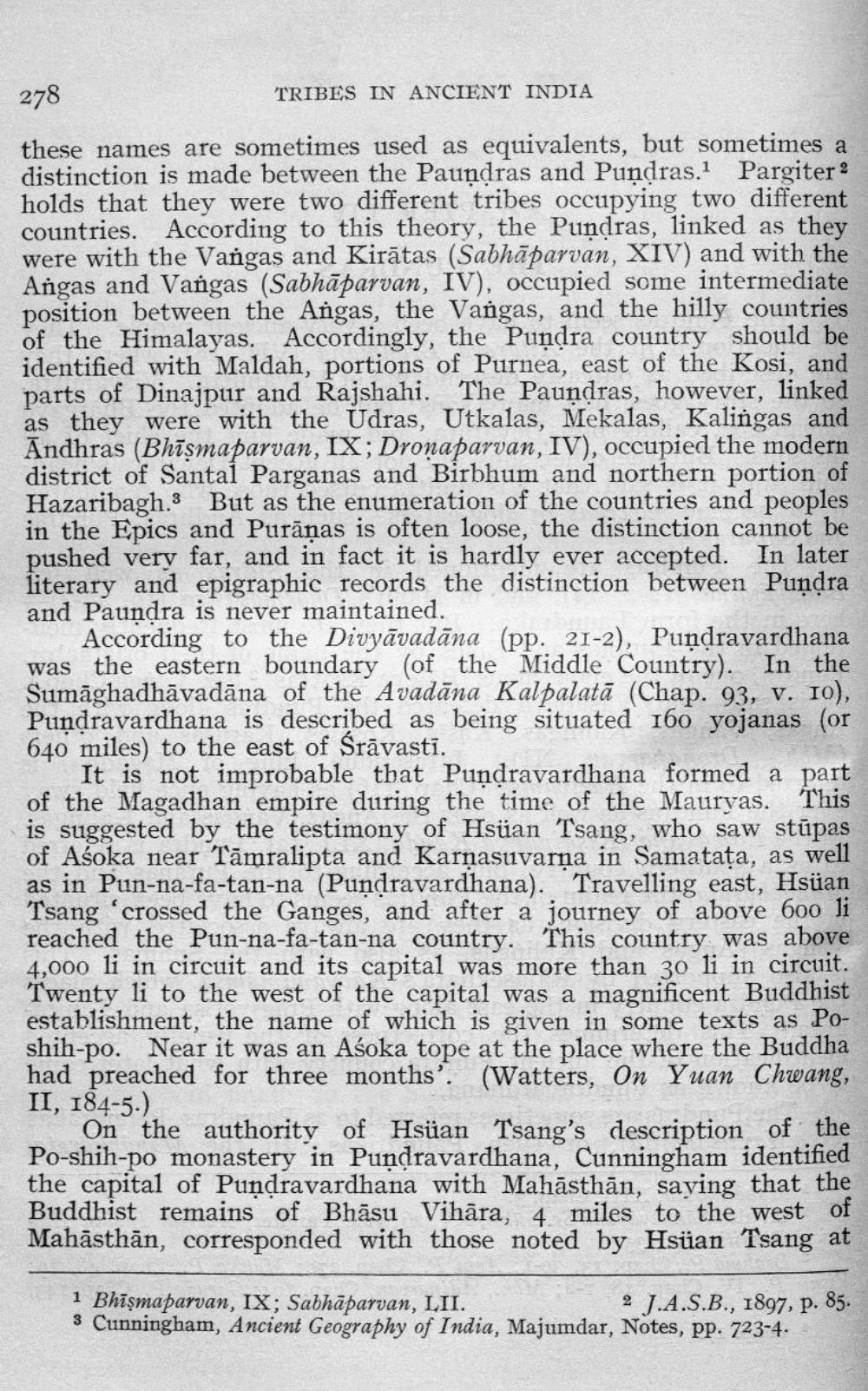________________
278
TRIBES IN ANCIENT INDIA
these names are sometimes used as equivalents, but sometimes a distinction is made between the Pauņdras and Pundras. Pargiter? holds that they were two different tribes occupying two different countries. According to this theory, the Pundras, linked as they were with the Vangas and Kirātas (Sabhāparvan, XIV) and with the Angas and Vangas (Sabhāparvan, IV), occupied some intermediate position between the Angas, the Vangas, and the hilly countries of the Himalayas. Accordingly, the Pundra country should be identified with Maldah, portions of Purnea, east of the Kosi, and parts of Dinajpur and Rajshahi. The Paundras, however, linked as they were with the Udras, Utkalas, Mekalas, Kalingas and Andhras (Bhīşmaparvan, IX; Dronaparvan, IV), occupied the modern district of Santal Parganas and Birbhum and northern portion of Hazaribagh. But as the enumeration of the countries and peoples in the Epics and Purāņas is often loose, the distinction cannot be pushed very far, and in fact it is hardly ever accepted. In later literary and epigraphic records the distinction between Pundra and Paundra is never maintained.
According to the Divyāvadāna (pp. 21-2), Pundravardhana was the eastern boundary of the Middle Country). In the Sumāghadhāvadāna of the Avadāna Kalpalatā (Chap. 93, v. 10), Pundravardhana is described as being situated 160 yojanas (or 640 miles) to the east of Srāvasti.
It is not improbable that Pundravardhana formed a part of the Magadhan empire during the time of the Mauryas. This is suggested by the testimony of Hsuan Tsang, who saw stūpas of Asoka near Tāmralipta and Karņasuvarņa in Samataţa, as well as in Pun-na-fa-tan-na (Pundravardhana). Travelling east, Hsüan Tsang 'crossed the Ganges, and after a journey of above 600 li reached the Pun-na-fa-tan-na country. This country was above 4,000 li in circuit and its capital was more than 30 li in circuit. Twenty li to the west of the capital was a magnificent Buddhist establishment, the name of which is given in some texts as Poshih-po. Near it was an Asoka tope at the place where the Buddha had preached for three months'. (Watters, On Yuan Chwang, II, 184-5.)
On the authority of Hsüan Tsang's description of the Po-shih-po monastery in Pundravardhana, Cunningham identified the capital of Pundravardhana with Mahāsthān, saying that the Buddhist remains of Bhāsu Vihāra, 4 miles to the west of Mahāsthān, corresponded with those noted by Hsüan Tsang at
1 Bhīşmaparvan, IX; Sabhāparvan, LII.
2 J.A.S.B., 1897, p. 85. 3 Cunningham, Ancient Geography of India, Majumdar, Notes, PP. 723-4.




